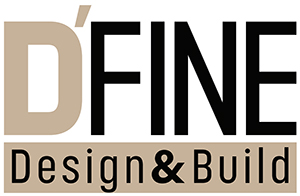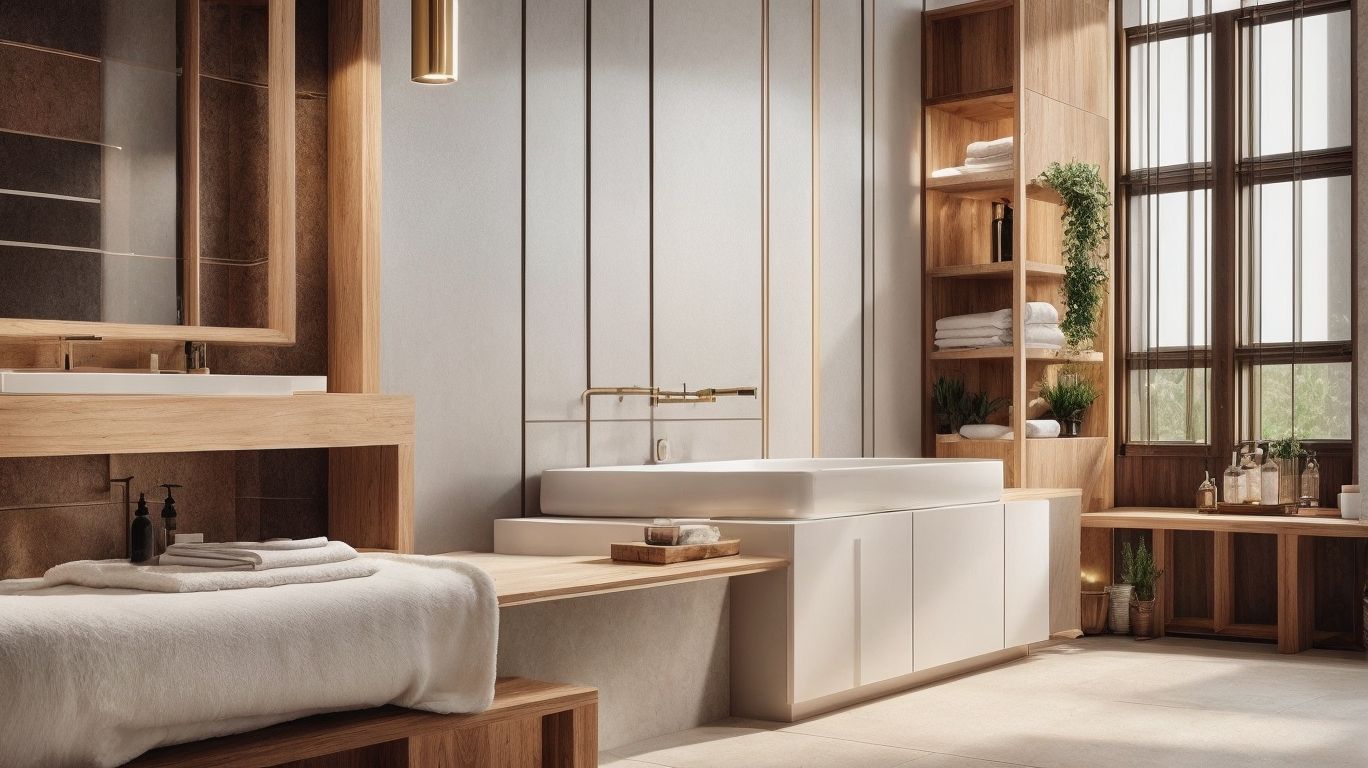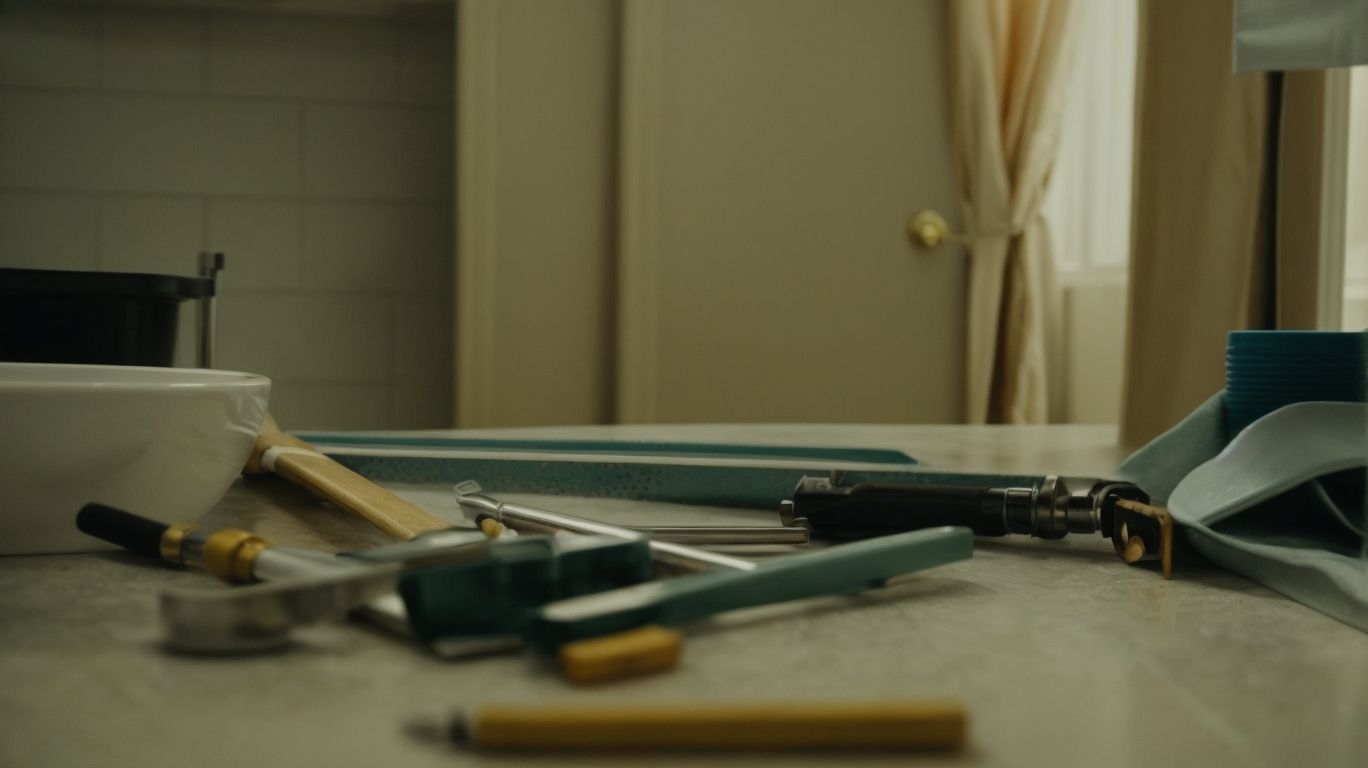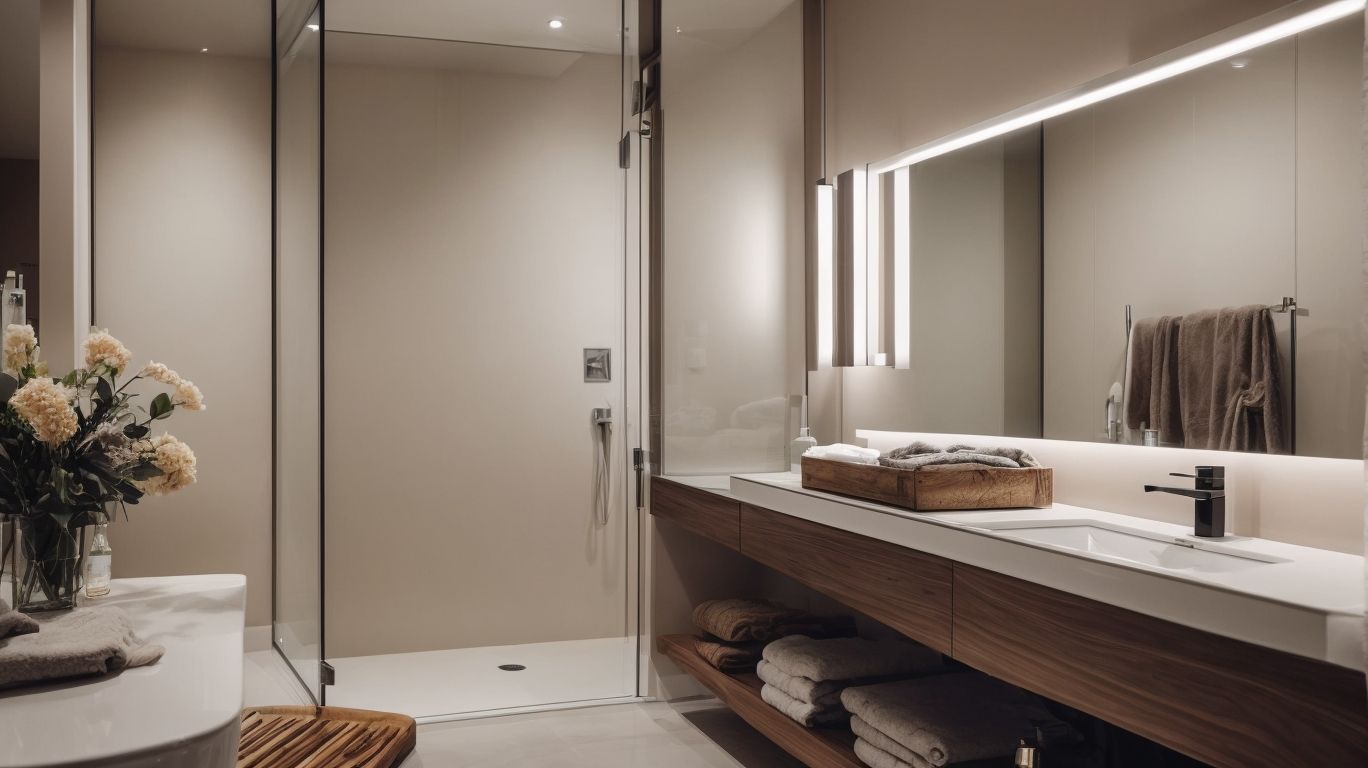Are you considering a bathroom remodel but feeling overwhelmed by the potential costs? In this comprehensive guide, we will break down the various factors that affect bathroom remodeling costs and provide you with strategies for setting and sticking to your budget.
From evaluating the need for a remodel to understanding the hidden costs and contingency planning, we cover it all. Whether you’re looking to save money or make informed decisions, this article will help you navigate the costs of bathroom remodeling with confidence.
Introduction to Bathroom Remodeling Costs
Bathroom remodeling encompasses a range of costs and considerations, including renovation, labor costs, materials cost, and potential unexpected expenses that can arise during the process. It involves careful design, budget allocation, and the engagement of contractors for tasks such as plumbing, electrical work, tile labor, shower door installation, and the installation of fixtures such as marble countertops and vanities.
Labor costs for bathroom remodeling can vary depending on the scope of the project and the expertise of the hired professionals. Skilled contractors often command higher fees, but they bring valuable experience and expertise to the table.
Materials such as tiles, countertops, and fixtures also have a significant impact on the overall costs. Unexpected expenses, like structural issues or water damage, can further add to the financial burden. Therefore, it’s essential for homeowners to conduct thorough research, get multiple quotes, and have a contingency fund in place to address any unforeseen costs.
Evaluating the Need for Bathroom Remodeling
Assessing the necessity of a bathroom remodel involves evaluating factors such as the current condition of the space, any past water damage incidents that may impact the renovation scope, the suitability of the existing square footage, and potential insurance considerations.
One of the crucial aspects to consider is the current condition of the bathroom. This includes examining the fixtures, cabinetry, flooring, and overall functionality. Any history of water damage could significantly influence the extent of renovations required, warranting a thorough inspection of plumbing, structural integrity, and mold presence.
Another essential factor is the available space. Assessing the layout’s efficiency and determining if there’s adequate room to accommodate desired changes, whether it’s expanding for a larger shower or optimizing storage, is pivotal in the decision-making process.
Investigating potential insurance implications is essential. Understanding how any past water damage incidents impact coverage and whether specific renovations may influence premiums is vital to the overall project planning.
Understanding the Factors Affecting Bathroom Remodeling Costs
Several factors influence bathroom remodeling costs, including labor shortages, the involvement of subcontractors for specialized tasks such as carpentry, plumbing, electrical work, and tile labor, as well as the material costs associated with fixtures like shower doors.
One of the most significant influencing factors is labor shortages, which can drive up costs due to increasing demand for skilled workers.
The engagement of subcontractors for specialized tasks, such as carpentry, plumbing, electrical work, and tile labor, adds complexity and expense to the project. Material costs for fixtures like shower doors vary depending on the quality and design, impacting the overall budget significantly. Each of these elements plays a crucial role in determining the overall expense of a bathroom remodel, making careful planning and budgeting essential.
Setting Your Bathroom Remodeling Budget
Establishing a comprehensive budget for a bathroom remodel involves careful allocation of funds, consideration of the average total cost for similar projects, potential insurance implications, and provisions for unexpected costs that may arise during the renovation process.
When allocating funds for a bathroom remodel, it’s crucial to prioritize the key expenses such as labor, materials, and professional services.
The average total cost for a standard bathroom renovation in the United States ranges from $10,000 to $15,000, depending on the scope of the project and the quality of materials used.
Ensuring that the budget accounts for these components can help in avoiding overspending and unnecessary financial stress.
Homeowners should be mindful of potential insurance implications, such as adjusting coverage for renovations or notifying the insurance provider about the upgrades.
Setting aside a contingency fund for unexpected expenses, such as repair work due to unforeseen structural issues or additional plumbing needs, is essential to manage any unplanned costs without derailing the entire project.
Researching Average Costs for Bathroom Remodeling Projects
Conducting research on the average costs for bathroom remodeling projects involves exploring resources such as remodeling magazines, seeking insights from professional bathroom designers, and obtaining estimates from qualified plumbers and contractors.
Remodeling magazines offer valuable insights into the latest design trends, material costs, and labor expenses. They provide a comprehensive overview of potential expenses.
Professional bathroom designers can offer tailored advice, suggesting cost-effective alternatives and high-quality products that align with your budget and vision. Consulting with experienced plumbers and contractors enables you to obtain detailed estimates. They take into account factors such as existing plumbing infrastructure, material preferences, and the scope of the renovation project.
Establishing Your Priorities for the Remodel
Defining your priorities for the remodel involves considering aspects such as the desired renovation scope, specific design elements like carpentry and marble countertops, and the incorporation of essential fixtures such as lighting, aligning them with the allocated budget and overall remodeling cost.
When establishing priorities for a bathroom remodel, it’s crucial to first assess the overall scope of the renovation. Are you looking for a complete overhaul or just a few specific upgrades?
Carpentry can add a touch of elegance and practical functionality to the space, whether it’s a custom-built vanity or shelving units. Marble countertops not only exude luxury but also offer durability and timeless appeal.
Furthermore, lighting plays a pivotal role in creating the right atmosphere. Integrating elements like ambient, task, and accent lighting can transform the functionality and aesthetics of the bathroom. It’s important to ensure that these design elements and fixtures align harmoniously with the predetermined budget to avoid any unforeseen financial strain.
Cost Breakdown for Bathroom Remodeling
Credits: Dfinedesignandbuild.Com – Tyler Carter
A detailed cost breakdown for a bathroom remodel includes the assessment of labor costs, materials cost, the specific scope of the project, potential subcontractor engagements for tasks such as plumbing, electrical work, and tile labor, as well as the expenses associated with fixtures like shower doors and vanities.
When considering labor costs, it’s essential to account for the expertise and time required for the demolition of existing structures, installation of plumbing and electrical systems, as well as the intricate work involved in tiling and finishing.
Materials cost pertains to a vast array of items including tiles, cabinetry, countertops, lighting fixtures, and necessary hardware. The project’s scope encompasses design, structural modifications, and any architectural refinements. Engaging subcontractors for plumbing, electrical work, and specialized tile labor ensures that each task is carried out to the highest standard by experts in their respective fields.
The costs related to fixtures cannot be overlooked. These may vary widely based on the quality and customization desired. The selection of shower doors, whether framed or frameless, and vanities with specific dimensions and materials contribute significantly to the overall budget. Understanding these components aids in a comprehensive and accurate estimation of the expenses involved in a bathroom remodel.
Overview of Major Expenses in Bathroom Remodeling
The major expenses in a bathroom remodeling project encompass labor costs, materials cost, potential unexpected expenses, and specific fixtures such as plumbing, electrical work, vanities, and hardware, each contributing to the overall renovation expenditure.
Undertaking a bathroom remodeling project often means allocating a significant portion of the budget towards labor costs. Skilled professionals are needed for tasks like demolishing existing structures, installing new fixtures, and completing intricate tasks such as tiling and grouting. Additionally, purchasing materials like tiles, flooring, bathroom fixtures, and fittings can also add up. It’s important to consider potential unforeseen expenses, such as water damage, mold remediation, or structural issues, that may arise during the remodel.
Specific fixtures, like plumbing, electrical work, and hardware, also play a crucial role in determining the overall expenditure. Modifications or upgrades to existing systems may be necessary for plumbing and electrical work, and the choice of high-quality hardware and vanities can significantly impact the project’s cost. It’s crucial to understand the breakdown of these expenses to effectively plan and budget for a successful bathroom remodeling project.
Detailing the Costs of Materials and Fixtures
Detailed costs of materials and fixtures for a bathroom remodel include expenses related to items such as marble countertops, vanities, lighting, and hardware, each contributing significant value to the overall remodeling cost.
When considering marble countertops, the cost can range widely depending on the quality and size, averaging from $75 to $250 per square foot.
Vanities, a focal point of the bathroom, can vary from $200 for a simple prefab to $2000+ for custom designs. Lighting options include recessed lights ($100-$200 per fixture), vanity light bars ($50-$300), and decorative sconces ($100-$500).
The hardware costs like faucets, handles, and towel bars can add up to $1000 or more.
Considering Labor and Installation Costs
The consideration of labor and installation costs in a bathroom remodel involves assessing expenses related to subcontractors, specialized tasks like tile labor and shower door installation, as well as the costs associated with plumbing and electrical work, all integral to the overall renovation budget.
When engaging subcontractors, it’s crucial to factor in their expertise and the scope of their work. This includes hiring tiling specialists for intricate tile labor, as well as experienced plumbers and electricians for the installation of fixtures and wiring.
The specialized nature of these tasks often requires specific skills and certifications, which can impact the cost. The complexity of plumbing and electrical work, especially when it involves relocating existing fixtures or wiring, can significantly influence the overall labor and installation expenses. It’s important to carefully plan and budget for these essential components of a bathroom remodel to ensure a successful and cost-effective renovation.
Strategies for Saving on Bathroom Remodeling
Implementing cost-effective strategies for a bathroom remodel involves exploring options such as DIY initiatives, engaging reliable contractors for specific tasks, and considering alternatives for materials and fixtures like tile labor and vanities to optimize the overall remodeling cost.
DIY initiatives can significantly reduce labor costs, especially for simpler tasks such as painting, minor plumbing repairs, or installing fixtures.
For more complex tasks like electrical work or extensive plumbing, hiring professional contractors ensures safety and compliance with building codes.
Regarding materials and fixtures, consider using repurposed or recycled items to save costs without compromising on quality.
Exploring budget-friendly alternatives like laminate countertops or vinyl flooring can also contribute to substantial savings.
Exploring Cost-Effective Alternatives for Materials and Fixtures
Exploring cost-effective alternatives for materials and fixtures in a bathroom remodel entails considering options such as alternative vanities, picture frame molding, and affordable lighting and hardware choices, all contributing to potential cost savings without compromising on quality.
Alternative vanities can range from repurposed furniture pieces, customizable options, to smaller standalone models that offer functionality and style within a budget-friendly range.
Picture frame molding provides a sophisticated aesthetic, and options like PVC and composite materials replicate the look of traditional wood molding at a fraction of the cost. Affordable lighting and hardware choices include LED fixtures, economical vanity lights, and budget-friendly faucets and handles that are durable and stylish.
Understanding the Impact of DIY vs. Professional Services
Understanding the impact of DIY versus professional services in a bathroom remodel involves assessing the benefits and limitations of DIY initiatives compared to engaging qualified contractors for specialized tasks such as plumbing and electrical work, considering their implications on the overall remodeling cost and quality.
One of the primary factors to consider in a bathroom remodel is the cost implications. While DIY projects may seem cost-effective initially, the overall expenses can escalate due to potential mistakes and the need to invest in specialized tools and materials.
On the other hand, professional contractors, though they may have higher upfront costs, often have access to wholesale pricing for materials and the expertise to minimize unnecessary expenses.
Regarding quality, DIY projects can vary greatly based on individual skill levels and available time. In contrast, professional contractors bring years of experience, precision, and adherence to industry standards, resulting in a higher-quality finish.
Specialized tasks such as plumbing and electrical work require specific knowledge and certification, which professional contractors possess, ensuring compliance with safety codes and regulations.
Specific tasks like installing fixtures, tiling, and cabinetry may appear feasible for DIY enthusiasts, but complex jobs such as plumbing and electrical modifications demand expertise to prevent potential hazards and ensure longevity.
Engaging a professional service guarantees a seamless and efficient process, avoiding potential issues that may arise from inadequate installations.
Hidden Costs and Contingency Planning
Credits: Dfinedesignandbuild.Com – Jeremy Mitchell
Navigating hidden costs in a bathroom remodel involves accounting for potential unexpected expenses, understanding the role of homeowners insurance in mitigating certain risks, and emphasizing the importance of including contingency funds within the allocated budget for unforeseen circumstances.
Unexpected costs can arise from issues such as water damage, structural problems, or unforeseen changes in the project scope. These can significantly impact the overall budget and timeline of the renovation.
Homeowners insurance plays a crucial role in mitigating risks associated with accidental damage, structural issues, or even liability concerns arising during the renovation process. It’s vital to review the policy to understand its coverage limitations and exclusions.
Contingency funds, typically around 10-20% of the total project cost, act as a safety net for unexpected expenses. These funds provide the flexibility to address any surprises that may emerge during the remodeling process, ensuring that the project remains on track without financial strain.
Having a detailed understanding of potential risks and coverage options allows homeowners to make informed decisions, ensuring that their renovation project proceeds smoothly and within budget.
Anticipating and Planning for Unexpected Expenses
Anticipating and planning for unexpected expenses in a bathroom remodel involves considering potential scenarios such as water damage incidents, additional carpentry needs, or unforeseen plumbing and electrical requirements, ensuring that the budget accounts for these potential costs.
This foresight is crucial as water damage incidents can wreak havoc on a bathroom renovation project, leading to extensive repairs and mold remediation, which can significantly inflate the overall expenses.
Unforeseen requirements for carpentry, such as fixing hidden structural issues, might demand a substantial portion of the budget, impacting the financial preparedness for the remodeling endeavor. Unplanned plumbing and electrical work could also burden the renovation budget, as upgrading old systems or resolving unexpected wiring complexities might incur significant costs.
Importance of Including Contingency Funds in Your Budget
The importance of including contingency funds in your bathroom remodeling budget cannot be overstated, as they serve as a crucial safeguard against unexpected costs that may arise during the renovation process, ensuring financial resilience and project completion within the allocated resources.
When planning a bathroom remodel, it’s essential to account for potential unforeseen circumstances. Contingency funds provide a buffer to address unexpected expenses, such as structural repairs, plumbing issues, or material price fluctuations, without derailing the entire project.
These funds offer peace of mind and prevent the need for hasty compromises or cutbacks in the quality of work due to financial constraints. Incorporating a contingency budget reflects a prudent approach, acknowledging the inherent uncertainties of renovation projects, thus fostering better financial preparedness and successful outcomes.
Finalizing Your Budget and Making Informed Decisions
Credits: Dfinedesignandbuild.Com – Alan Hill
Finalizing your budget for a bathroom remodel involves making informed decisions regarding the allocation of funds, engaging the right contractors for essential tasks such as plumbing, electrical work, and lighting installations, ensuring that the budget aligns with the desired scope and quality of the renovation.
Understanding the intricacies of budget allocation is crucial. It requires assessing the costs associated with materials, labor, and additional expenses such as permits and inspections.
This process involves careful consideration of priorities, balancing between cost-effectiveness and desired outcomes. Engaging reputable contractors is pivotal. Their expertise in bathroom remodeling can provide insights into cost-saving options and ensure proper planning for every aspect of the project, from fixtures to tiling and vanity installations.
Reviewing and Refining Your Budget Plan
The iterative process of reviewing and refining your budget plan for a bathroom remodel involves addressing unexpected costs, revisiting the allocation of funds, and optimizing provisions for subcontractors, carpentry, marble countertops, and other essential elements to achieve a balanced and realistic budget.
During the review process, it’s important to account for potential fluctuations in material and labor costs, especially if working with subcontractors, to ensure that the budget remains adaptable.
Adjustments may also be necessary for the carpentry aspect, considering variations in wood prices and specific design requests. Allocating sufficient funds for marble countertops, which can be a luxurious but expensive choice, requires careful consideration to strike the right balance between quality and affordability.
Revisiting the budget plan allows for a comprehensive evaluation of all expenses, ensuring that every aspect of the remodel, from installation fees to unexpected overhead costs, is adequately covered. For more information on navigating the costs of bathroom remodeling, check out the Budget Breakdown: Navigating the Costs of Bathroom Remodeling.
It’s crucial to maintain flexibility and foresight in budgeting to accommodate any unforeseen circumstances or revisions while aiming for an efficient and visually appealing bathroom renovation.
Seeking Professional Advice for Budget Refinements
Seeking professional advice for budget refinements in a bathroom remodel involves consulting qualified contractors, plumbers, electricians, carpenters, and tile installers to gain insights and recommendations for optimizing the budget while ensuring the quality and integrity of the renovation project.
Qualified contractors play a crucial role in understanding the scope of work and suggesting cost-effective alternatives without compromising on the structural stability and safety of the renovation.
Similarly, skilled plumbers can offer solutions to upgrade plumbing systems with minimal impact on the budget, ensuring efficient water usage and functionality.
Experienced electricians can provide valuable advice on energy-efficient lighting and electrical fixtures to cut down long-term operational costs.
Moreover, carpenters not only contribute to the aesthetic appeal but also offer advice on material selections that align with the budget while maintaining durability and visual appeal.
Proficient tile installers can recommend options that balance aesthetics and cost-effectiveness, enhancing the overall value of the renovation.
Frequently Asked Questions
What are the average costs associated with a bathroom remodel?
The average cost for a bathroom remodel can vary greatly depending on the scope of the project. On average, homeowners can expect to spend between $5,000 and $15,000 for a basic remodel, and upwards of $25,000 for a high-end remodel.
What factors can affect the overall cost of a bathroom remodel?
There are several factors that can impact the cost of a bathroom remodel, including the size of the bathroom, the materials used, and the complexity of the project. Other factors such as labor costs, location, and any necessary plumbing or electrical work can also contribute to the overall cost.
How can I save money on my bathroom remodel?
There are several ways to save money on a bathroom remodel, such as opting for more affordable materials, doing some of the work yourself, or sticking to a simple and straightforward design. It’s also important to get multiple quotes from different contractors and compare prices to ensure you’re getting the best deal.
What expenses should I budget for in a bathroom remodel?
In addition to the cost of materials and labor, there are a few other expenses to consider when budgeting for a bathroom remodel. These may include permits and fees, design and architectural fees, and any unexpected costs that may arise during the project. It’s important to factor these into your budget to avoid any financial surprises.
How can I make sure I stay within my budget during a bathroom remodel?
One way to stay on budget during a bathroom remodel is to have a clearly defined budget from the start. Make a list of all the expenses you anticipate and stick to it as closely as possible. It’s also a good idea to have a contingency fund for any unexpected costs that may arise. Communication with your contractor is key to ensure everyone is on the same page when it comes to budget and expenses.
Are there any cost-saving alternatives to a full bathroom remodel?
If a full bathroom remodel is not within your budget, there are some smaller, cost-saving alternatives you can consider. This may include a partial remodel, such as updating the fixtures and accessories, or a cosmetic update, such as a fresh coat of paint and new hardware. These smaller projects can still make a big impact without breaking the bank.
Timonium, MD Showroom
Location
D’Fine Design and Build
2135 York Rd, Suite C
Timonium, MD 21093
Opening Hours
Monday to Friday: 9am – 5pm
Saturday: 10am – 5pm
Sunday: Closed
Sales & Order Enquiries
(410) 616-9949
[email protected]




